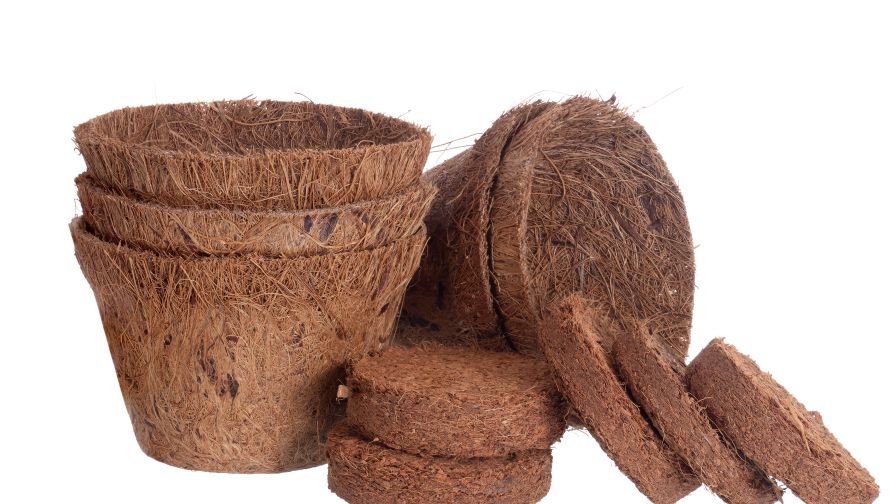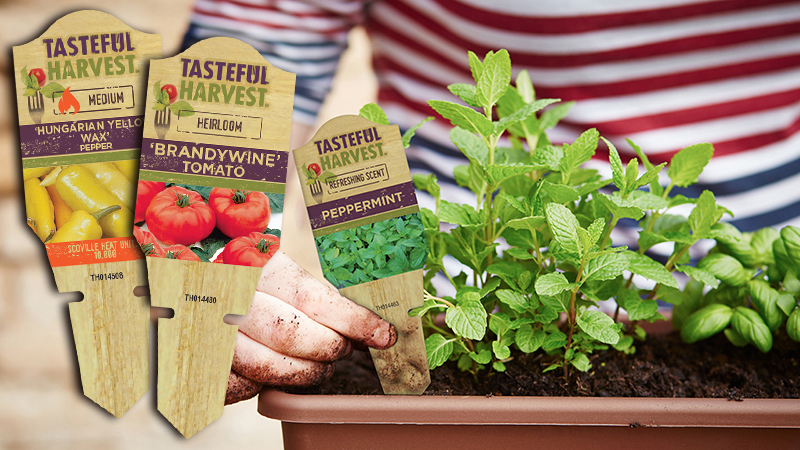Why Appearance and Durability Matter in the Range of Biocontainers

This arugula is growing in a biodegradable peat pot, which is made from compressed peat moss. Photo: Adobe Stock image
There is no doubt sustainability is here to stay in greenhouse crop production. We have a petroleum plastic-intensive industry, and the containers we use are one of the contributing factors.
Biocontainers continue to pique growers’ interest, and it seems that each year developments are made to improve the options we have. However, when it comes to biocontainers, people can get caught in a trap looking for a holy grail — something that doesn’t exist among biocontainers.
A container that holds up perfectly during production and retailing but also degrades rapidly in the ground or compost pile simply does not exist. Or a container made from organic fibers that will look just like a petroleum plastic container. While there may be no single biocontainer amounting to a holy grail, there are certainly a number of “righteous cups” — biocontainers with different appearances and characteristics that are well-suited for production. The goal of this article is to highlight some of the key considerations to make when selecting biocontainers for your production.
Looks Matter
One of the first considerations when evaluating biocontainers is: what do you want them to look like? Greenhouse crops are primarily a retail product, and appearances matter. There is a wide range in biocontainer appearances. Some biocontainers, simply put, look more like biocontainers than others. For example, containers made from compressed peat moss (peat pots) or paper fiber are easy to tell they are biocontainers. Alternatively, some of the biocontainers constructed using a high concentration of biopolymers such as polyhydroxyalkanoate (PHA) or polylactic acid (PLA) look very similar to petroleum plastic containers.
The range in appearances among biocontainers is a good thing for producers, since they are growing for a range of markets differing in their needs. Some consumers will want the containers their plants are grown in to clearly look like biocontainers. Alternatively, some consumers would prefer the containers to look more traditional, similar to petroleum plastic containers. Selecting a biocontainer that reflects the values of your customers will help successfully integrate biocontainers into your portfolio.
Pots Should Degrade Just in Time
In addition to appearances, biocontainer durability is one of the other most important traits to keep in mind. Biocontainers are designed to degrade — but if that process starts too early, it can cause a headache. Whether it is handling during production and transportation, or handling by prospective consumers in greenhouses and garden centers, biocontainers that break down too easily can be a challenge. The parent material for containers is one of the primary influences on container durability.
On the spectrum of strength, containers range from the pressed or formed organic fibers on one end to biopolymers on the other. Of course, the deterioration of biocontainers is affected by how crops are grown. For example, when crops are grown “dry,” restricting irrigation and keeping the substrate volumetric water content lower, container strength is maintained for a longer time. Alternatively, when crops are grown more “wet,” irrigated more frequently to maintain a higher substrate volumetric water content, degradation may speed up and cause containers to get weaker.
Some biocontainers are manufactured with compounds that are designed to reduce microbial growth, trying to improve not only the appearance but also the strength of containers. In addition to how crops are grown, production time affects biocontainer durability. The longer the crop time, the more time is allowed for containers to degrade. Generally speaking, biocontainers are most well-suited for shorter crop times. The longer crops are grown for, the more degradation can occur during production. For those crops with the shortest production time, such as vegetable and herb bedding plants, a wide variety of biocontainers are suitable. Alternatively, select containers made of the most durable materials for longer production times.
Integrating biocontainers into production isn’t just about if the container will hold up during production and look good for retailing — it also has to fit in, literally, with production. Automation is a key component for efficient operation for many greenhouses. If automation is used in production, be sure biocontainers will physically work within the automation infrastructure that is in place in greenhouses. This may include things such as container fillers and planting machines. In addition to fit, we have found some biopolymer containers are not as flexible as petroleum plastic or even fiber-based biocontainers and can crack or break when being handled by automation.

Coir pots, which are made from coconut coir, can be more porous and allow for greater air exchange and dry-down with the substrate. Photo: Adobe Stock image
Can the Pot be Planted, Too?
One of the most popular attributes — or perceived attributes — of biocontainers is the ability to plant them in the ground along with the plant, without having to take them off and dispose of them elsewhere. This is one area of biocontainers that receives a lot of interest. Some biocontainers are meant to degrade sufficiently to let roots grow through them and into garden soils. Other containers are designed to allow roots to grow unimpeded through the container, using large slits or openings across the walls or tabs that can be removed to create larger openings on the bottom and sides.
Regardless of biocontainer composition or design, there is no doubt plants will establish without a container surrounding the roots as opposed to with one, regardless of any design, material, or other container attribute. While we would all love the no-fuss-no-muss approach of planting containers in the ground, consider alternative container disposal techniques, such as breaking containers up and burying them in the planting hole — just not still on the root ball — or incorporating biocontainers into compost.
Are there any other benefits to look for in biocontainers? There are some that may warrant consideration. There are some biopolymer containers using PLA and/or PHA and amended with soy products that can release mineral nutrient during production for plant uptake. This can reduce the amount of fertilizer required during finishing, and also be a benefit to consumers. Aside from benefits, be mindful of other container properties that may cause changes in crop culture.
The porosity of biocontainers can also affect crop culture. Some biocontainers, like those made from pressed coconut coir fibers, are more porous and allow for greater air exchange and dry-down with the substrate. Other biocontainers, particularly those made with a high proportion of biopolymer parent material(s), lack the porosity that increases air exchange in the root zone.
Biocontainers are not plastic containers, that’s for sure — but ultimately that’s a good thing. To make the transition as effective and efficient as possible, carefully consider the different biocontainers available and their different characteristics. Compare the strengths and weakness of containers to the crops you want to grow in them. An honest appraisal of containers and a thoughtful paring with crops will improve your success using biocontainers.









